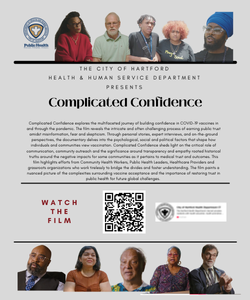By Renta Sango
The court cases date back to the mid 1700s. A wife appears in court to claim the slaves named in her deceased husband’s will. A mother and son dispute over the pay rate for two “Negro boys.” A vendor has to assume liability for slaves who have a habit of running away.
Judges and lawyers in the nation’s judicial system cite cases like those — court rulings based on antebellum laws that saw Black people as property — as relevant precedent today, typically without much thought. And Justin Simard, an associate professor at Michigan State University College of Law, wants it to stop.
“Some of these cases, when the judges cite them, they don’t even admit that it involves a human,” he says. “They just treat it like a regular case.”
That disregard, or disinterest, by the courts led Simard to create the Citing Slavery Project, an online database of hundreds of thousands of instances in which slave-era laws are used to support present-day legal cases.
With more than 100 million cases filed each year in state trial courts, Simard and his students are hoping to show people how deeply slave-era policies are embedded in U.S. laws, in an effort to end the practice. They have begun to present their findings to judges, lawyers, law librarians, and historians.
“They’re part of these institutions that have played a really vital role in slavery and I think it’s their obligation – all lawyers and judges have this obligation – to help address the role that their courts played,” says Simard.
He is convinced that we won’t heal as a nation unless the judicial system acknowledges that slavery was a foundation for American civil law.
Simard’s project began 13 years ago when he was a doctoral student researching early Northern and Southern judicial practices as part of his dissertation on commercial property law. Deep in his work, Simard noticed a pattern: the repeated use of laws related to slavery to justify or support a legal argument.
The number of citations based on slave law was high – hundreds of times, according to his initial count. More than 160 years after the Emancipation Proclamation, judges were still referring to laws involving enslaved Black people to support their findings.
After becoming a professor at Michigan State, Simard and his law students launched an online database featuring judicial opinions that include slave law citations in all sorts of cases throughout the country.
One reason it happens so often is the lack of Black lawyers and judges.
Of the 1.3 million lawyers in the United States, 81% identify as white, according to a 2022 demographics report from the American Bar Association. Black lawyers make up just 5% of the profession, a percentage that has held steady since 2012. Among judges, just 21% of all district court judges nationwide are Black.
While the Citing Slavery Project is important, Simard says it’s just one way of bringing racial healing to the legal profession and judicial system.
“People often say, ‘O.K., do we just solve this problem by not citing these cases anymore?’ And I don’t think that’s the case,” says Simard, who is white. “I think when we’re thinking about racial healing, this isn’t enough to atone for the important role that lawyers and judges have played in supporting slavery and allowing its legacy to persist into the present.”
To that end, Simard and his students have made his case to legal organizations, law schools and anyone else who will listen. He is relying on Michigan State University law students and students from other law schools to deliver presentations across the country.
Torence Witherspoon, the Citing Slavery Project’s outreach director and a Michigan State University law student, says he’s been to several organizations to get the message out.
“We’ve had the opportunity to speak to the Oregon Court of Appeals. We just presented to the National Association of Women Judges,” says Witherspoon, who is multiracial. “We presented to multiple law library associations. We presented to the Michigan Supreme Court Historical Society, which included the current members of the Supreme Court in Michigan.”
Witherspoon’s been somewhat surprised by how well their presentations have been received.
“For those kind of heavy hitters in the legal profession being open and willing to hear this material and then, not just that, to be moved by it; to be intrigued by it; to be filled with further questions in wanting to engage with the material further after our presentation has been an incredible experience,” he says.
Witherspoon knew about reconstruction-era policies before beginning law school, but It wasn’t until taking Simard’s course that he began to learn the depths of the connections between slavery law and present-day legal arguments.
“To some degree, the acknowledgment – the fact that this research exists, the fact that we’re engaging with the material and pushing back on the norms in the legal profession as it relates to race and/or the legacy of slavery in this country — that can be healing,” he says.
Simard believes the profession should more formally acknowledge the problem. He has suggested that language be added to the Bluebook, the widely used style guide for legal citation, indicating that an enslaved person is “at issue” in a case.
While the goal is to present the project to the American Bar Association some day, students look forward to training other law students and future legal professionals.
“One thing that is an outlier for people like myself and my other Black colleagues who work on the project, is that it actually is a lot more difficult to read these cases,” says Witherspoon. “It’s a lot more mentally and emotionally draining to read cases where people who maybe aren’t, but are akin to your ancestors, are being talked about like property.”
This article was originally published in Word In Black .





